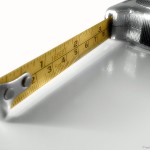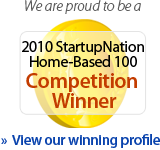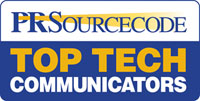Measuring the Real Value of Media Coverage
Posted on May 1, 2013 by Crystal Monahan
Filed Under Media, Public Relations | Leave a Comment
 I came across an interesting blog post in MediaPost recently in which the author, travel PR executive Vicky Hastings, noted that quantitative measures are no longer sufficient for measuring the success of PR. Hear hear!
I came across an interesting blog post in MediaPost recently in which the author, travel PR executive Vicky Hastings, noted that quantitative measures are no longer sufficient for measuring the success of PR. Hear hear!
While the ‘what’s’ and ‘how’s’ of PR measurement will remain in debate for years to come, particularly as the industry continues to add social media to their PR mix, what I found of most interest is the recommended approach to measuring and reporting on media coverage.
Like the author of the above-mentioned blog post, we at PerkettPR believe that media coverage should be measured on both quantity and quality. Yes, the quantity of articles is important, but I’d argue that the quality of that coverage is equally important. Even as I write this, however, I know there will never come a day when a client requests great articles over more articles. ☺
Media Coverage ≠ Ad Space
We do agree that the purpose of media relations is not only to generate awareness, but to also obtain third party validation. A journalist-written article about a brand or its product is inherently more valuable than purchased ad space. The author notes that advertising equivalencies (AVEs) should never be used as a measurement for media coverage, and we wholeheartedly agree.
Measuring against AVE’s is an outdated and inaccurate assessment of an article’s value for several reasons – not the least of which is the existence of digital-only publications and the fact that 50 percent of consumers read their news online (The Social Guy offers some insight on how AVEs work – or don’t – in the digital age).
Another big one in my book is that it doesn’t take into account the quality of an article. Granted, quality is a unique and somewhat subjective factor in media measurement. While one can argue that a quarter-page ad in Forbes offers more value than a similar ad in a trade publication, that’s not necessarily true. It may cost more, but it’s the impact of the ad that matters.
Value is in the eye of the beholder
The same holds true for media coverage. The perception of value is largely dependent on the publications that best deliver on an individual company’s PR goals. For example, if the first goal of PR is to drive leads for the sales team, a trade publication read by sales prospects may be more helpful in generating leads than a story in a top business outlet; and will therefore be perceived as more valuable.
Shouldn’t that article then be measured more highly in accordance with its perceived value?
Next, consider the elements that make up that article. Does it hit on the company’s key messages? Does it include a spokesperson quote? A customer success story? Or even a photo or screenshot of the company’s product? Each of these elements not only adds another layer to the story, but also offers greater value. To measure an article that contains all of these elements simply by how much ad space it commands is hardly a true assessment of its actual value.
Measurement Matters
At PerkettPR, we promote a broader view and definition of media measurement to our clients, and by and large, they agree with this approach. But determining what to measure is only half the battle. Figuring out how to measure it is the hard part.
That’s why we’ve developed our own proprietary methodology and reporting process to address this need, but we’re curious to know what others are doing to measure and report the real value of media coverage.
Got any tips or insights you’d like to share? What do your clients ask for or care about most? We’d love to follow this post with a round up of your best ideas.
Tags: Advertising Equivalencies, AVE, Coverage, Forbes, measurement, Media, media coverage, PR, PR measurement, quantitative measures, The Social Guy, Vicky Hastings











